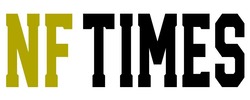Assessment is a crucial aspect of understanding how well your students are progressing and learning. In this how-to guide, you will learn effective strategies to accurately measure student progress in the classroom. By implementing techniques such as changing weighting scales, utilizing informal observations, allowing for self-assessment, and providing multiple test formats, you can gain a comprehensive understanding of your students’ academic growth and areas of improvement. Let’s explore into the various methods to effectively measure student progress.
Key Takeaways:
- Change Weighting Scale: Adjusting the weight of assessments can cater to students with accommodations, ensuring fair evaluation.
- Use Informal Observation: Observing students informally helps identify learning needs and progression that traditional tests may not reveal.
- Allow for Self-Assessment: Encouraging self-assessment empowers students to identify gaps, set goals, and stay motivated in their learning.
- Provide Multiple Test Formats: Offering various test formats like oral-response, multiple choice, and graphic organizers can give a more comprehensive view of student progress.
- Offer Diverse Assessment Methods: Utilizing a variety of assessment methods helps teachers gain a holistic view of student learning beyond written tests alone.
Factors to Consider When Measuring Student Progress
To effectively measure student progress, there are several key factors to consider. These include changing the weighting scale, using informal observation, allowing for self-assessment, and providing multiple test formats.
Change Weighting Scale
There’s a crucial aspect to consider when measuring student progress: adjusting the weighting scale of assessments. By changing the weight of different types of assessments, such as exams, quizzes, and daily assignments, teachers can ensure a more accurate representation of a student’s overall performance. After all, exam results might hold more weight in the final grade (e.g., 50%), while daily assignments may have less influence (e.g., 20%), based on individual student needs and instructional accommodations.
Use Informal Observation
On the other hand, informal observation plays a vital role in evaluating student progress. By observing students throughout the school day, teachers can gather valuable insights into their learning needs and progress. It allows for data collection through various means such as notes, checklists, and audio recordings, providing a comprehensive view of student strengths and areas for improvement.
Allow for Self-Assessment
Empowering students to engage in self-assessment can significantly enhance the measurement of their progress. By encouraging students to reflect on their learning, identify skill gaps, and set realistic goals, they take ownership of their academic journey. This process not only fosters motivation and interest but also equips students with valuable self-regulation skills.
Provide Multiple Test Formats
When it comes to assessing student progress, offering multiple test formats is key. By providing various assessment options such as oral-response tests, multiple-choice questions, long answers, and diagrams, teachers can accommodate different learning styles and preferences. This approach ensures a more comprehensive evaluation of student knowledge and skills, beyond traditional written tests.
Summing up
Presently, measuring student progress involves a variety of strategies to ensure a comprehensive assessment of their learning. From changing weighting scales to allow for different assessment formats, teachers have multiple tools at their disposal to accurately gauge student understanding. By incorporating informal observations, self-assessment opportunities, and providing multiple test formats, educators can tailor their assessments to meet the diverse needs and learning preferences of each student.
It is necessary to constantly evaluate and adjust your assessment methods to suit the individual needs of your students. By taking a holistic approach to measuring student progress, you can gain a deeper understanding of their strengths, challenges, and areas for growth. Be mindful of, the goal is not just to assign grades but to provide meaningful feedback that helps students enhance their learning journey and reach their full potential.
FAQ
Q: How can teachers adjust the weighting scale for student assessments?
A: Teachers can adjust the weighting scale by assigning different percentages to various types of assessments, such as exams, quizzes, and assignments, based on the importance of each in determining the final grade.
Q: What is the significance of using informal observations to measure student progress?
A: Informal observations provide valuable insights into student learning needs and progress by allowing teachers to collect data through notes, checklists, and audio notes, which cannot be captured on written tests.
Q: Why is self-assessment important in measuring student progress?
A: Self-assessment allows students to reflect on their learning, identify gaps in skills or knowledge, revise their work, and set realistic goals, ultimately keeping them motivated and engaged in their learning.
Q: How can teachers provide multiple test formats to assess student learning?
A: Teachers can offer oral-response tests, multiple choice, long answer, short answer, diagrams, charts, fill-in-the-blank, and other graphic organizers to allow students to demonstrate their understanding in various ways, providing a more comprehensive picture of student progress.
Q: Why is it important to give students numerous ways to demonstrate their learning?
A: Providing diverse assessment formats enables teachers to gain a clearer understanding of student progress beyond traditional written tests, accommodating different learning styles and abilities, and fostering a more holistic evaluation of student learning.
